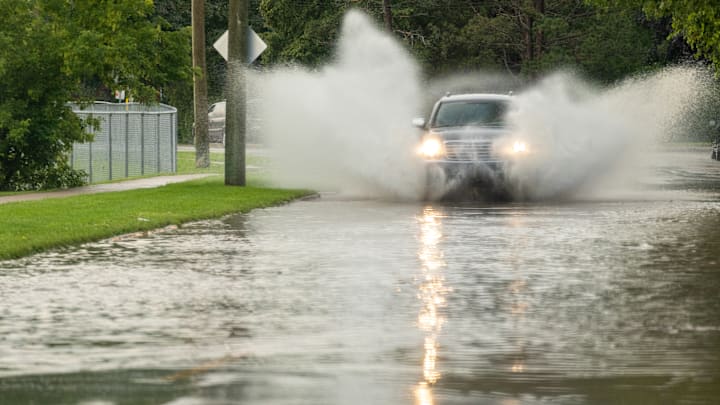Recent floods in places like Kerrville, Texas, and Plainfield, New Jersey, have been devastating, with lives lost and communities upended. During such tragedies, it’s essential to recognize that the dangers of flooding extend beyond the speed of the waters—the lingering debris and substances in the water can also pose serious risks.
Floodwater’s Hidden (And Not So Hidden) Dangers
Emergency officials can never be precisely sure about everything that’s in floodwaters in a given area, but they can make educated guesses based on where the stream comes from and the places that water might have touched. The Johns Hopkins Bloomberg School of Public Health warns that people can come into contact with pathogens from sewage when floodwaters overwhelm municipal sewer systems. Sudden flooding can carry human and animal waste from the sewer pipes into the streets. Natalie Exum, an assistant professor at the school, notes that it’s easy to contract a gastrointestinal illness from such exposure—and it could require a trip to the emergency room.

Additionally, floodwaters are often rife with household and industrial chemicals picked up from houses, buildings, and cars. They can include products like antifreeze, drain cleaners, and bleach, as well as industrial waste, including paints and solutions containing heavy metals—all of which are harmful to both pets and humans.
Large objects carried by swiftly flowing waters, such as vehicles and trees, can cause serious injuries to people and animals. According to the National Weather Service, just 1 foot of rushing water can carry away most cars, and 2 feet does the same to SUVs and trucks. Colliding with such heavy objects can lead to serious harm or even death. Downed power lines also pose a risk of electrocution, while wild or stray animals that got caught in a flood may spread diseases to people through their bites or by contact with their carcasses.
What To Do If You’ve Been Exposed to Floodwaters
While the CDC says it’s best to stay out of floodwaters, that’s not always an option in an emergency. Those who must wade through floodwater should thoroughly wash themselves with soap and clean water afterwards, or use sanitizer or alcohol wipes to tend to any wounds as soon as possible.
Any clothing that came into contact with contaminated waters should be washed using the hot setting and detergent to kill germs. And it wouldn’t hurt to consult a doctor with any questions or concerns.
Read More About Weather:
